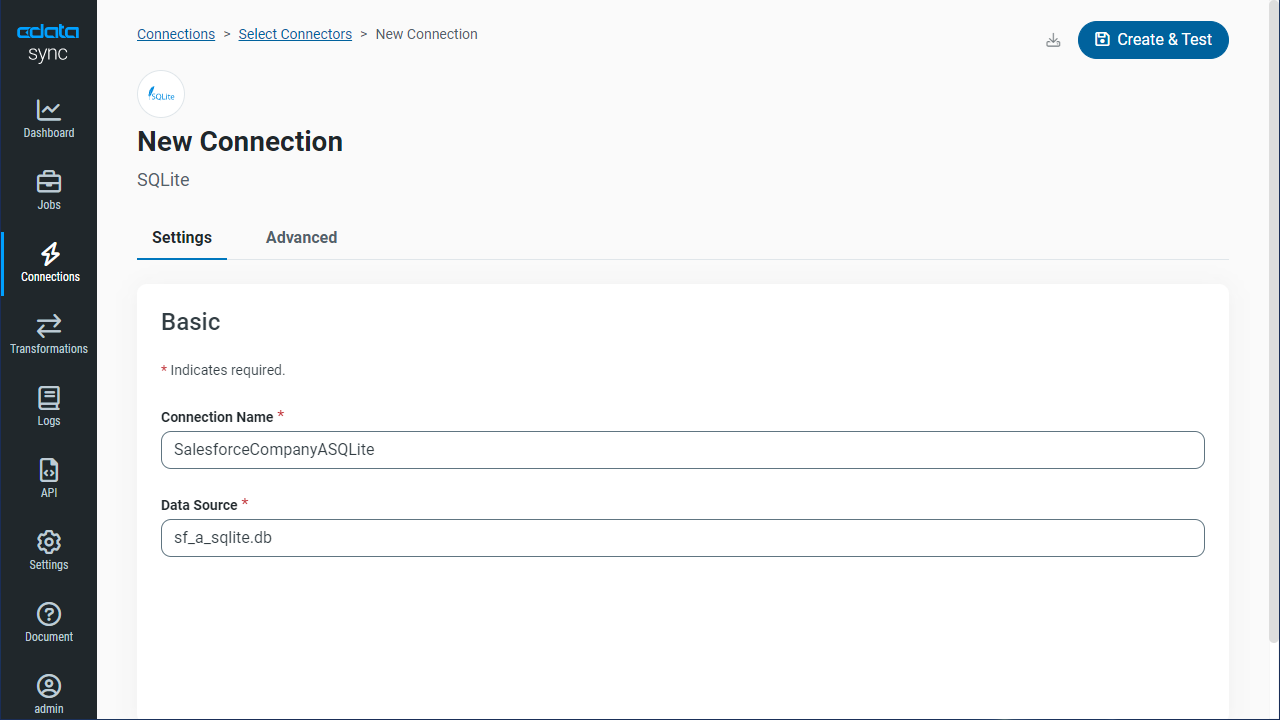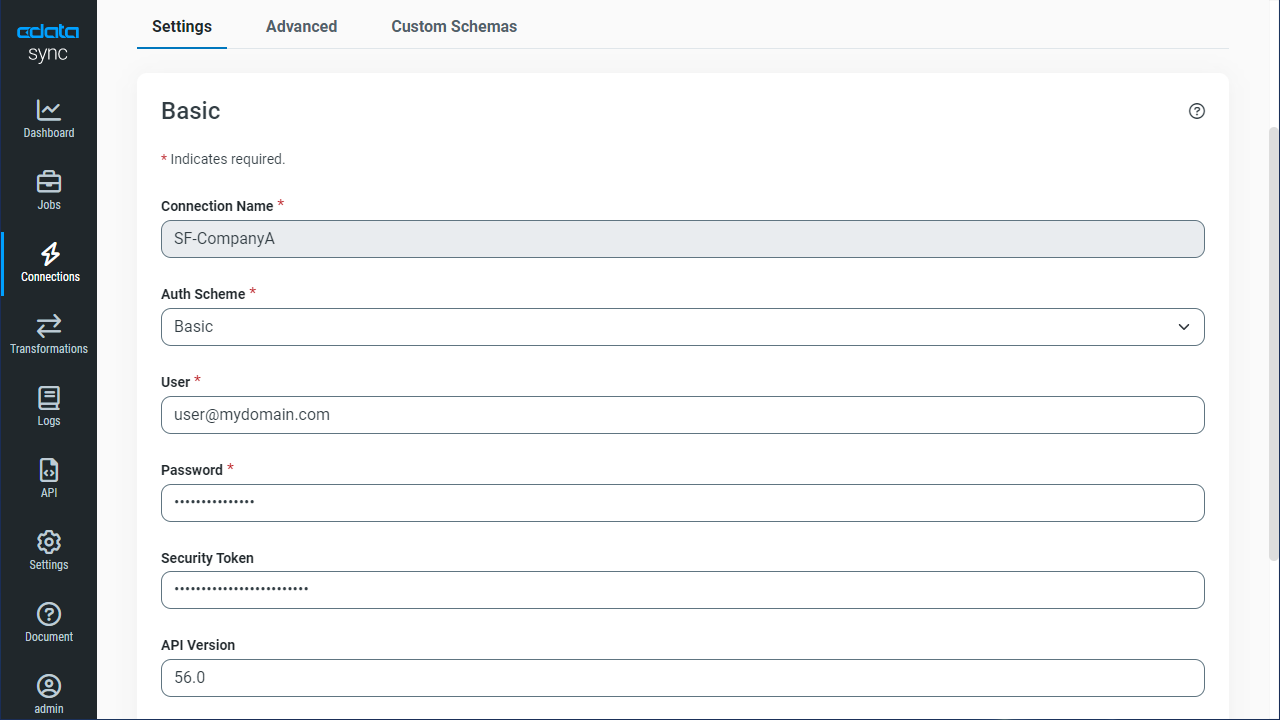Discover how a bimodal integration strategy can address the major data management challenges facing your organization today.
Get the Report →Replicate Multiple Sage US Accounts
Replicate multiple Sage US accounts to one or many databases.
CData Sync is a stand-alone application that provides solutions for a variety of replication scenarios such as replicating sandbox and production instances into your database. CData Sync includes a web-based interface that makes it easy to manage multiple Sage US connections. In this article we show how to use the web app to replicate multiple Sage US accounts to a single database.
Configure the Replication Destination
Using CData Sync, you can replicate Sage US data to any number of databases, both cloud-based and on-premises. To add a replication destination, navigate to the Connections tab.
- Click Add Connection.
- Select a destination and enter the necessary connection properties. In this article, we use SQLite.
- Enter the necessary connection properties. To replicate Sage US to a SQLite database, enter a file path in the Data Source box.
- Click Test Connection to ensure that the connection is configured properly.
![Configure a Destination connection (SQLite is shown).]()
- Click Save Changes.
Configure Sage US Connections
You can configure connections to Sage US from the Connections tab. To add a connection to one of your Sage US accounts, navigate to the Connections tab. For each Sage US account you wish to replicate, do the following:
- Click Add Connection.
- Select a source (Sage US).
- Configure the connection properties.
The Application Id and Company Name connection string options are required to connect to Sage as a data source. You can obtain an Application Id by contacting Sage directly to request access to the Sage 50 SDK.
Sage must be installed on the machine. The Sage.Peachtree.API.dll and Sage.Peachtree.API.Resolver.dll assemblies are required. These assemblies are installed with Sage in C:/Program Files/Sage/Peachtree/API/. Additionally, the Sage SDK requires .NET Framework 4.0 and is only compatible with 32-bit applications. To use the Sage SDK in Visual Studio, set the Platform Target property to "x86" in Project -> Properties -> Build.
You must authorize the application to access company data: To authorize your application to access Sage, restart the Sage application, open the company you want to access, and connect with your application. You will then be prompted to set access permissions for the application in the resulting dialog.
While the compiled executable will require authorization only once, during development you may need to follow this process to reauthorize a new build. To avoid restarting the Sage application when developing with Visual Studio, click Build -> Configuration Manager and uncheck "Build" for your project.
![Configure a Source connection (Salesforce is shown).]()
- Click Connect to ensure that the connection is configured properly.
- Click Save Changes.
Configure Queries for Each Sage US Instance
CData Sync enables you to control replication with a point-and-click interface and with SQL queries. To configure a replication, navigate to the Jobs tab and click Add Job. Select the Source and Destination for your replication.
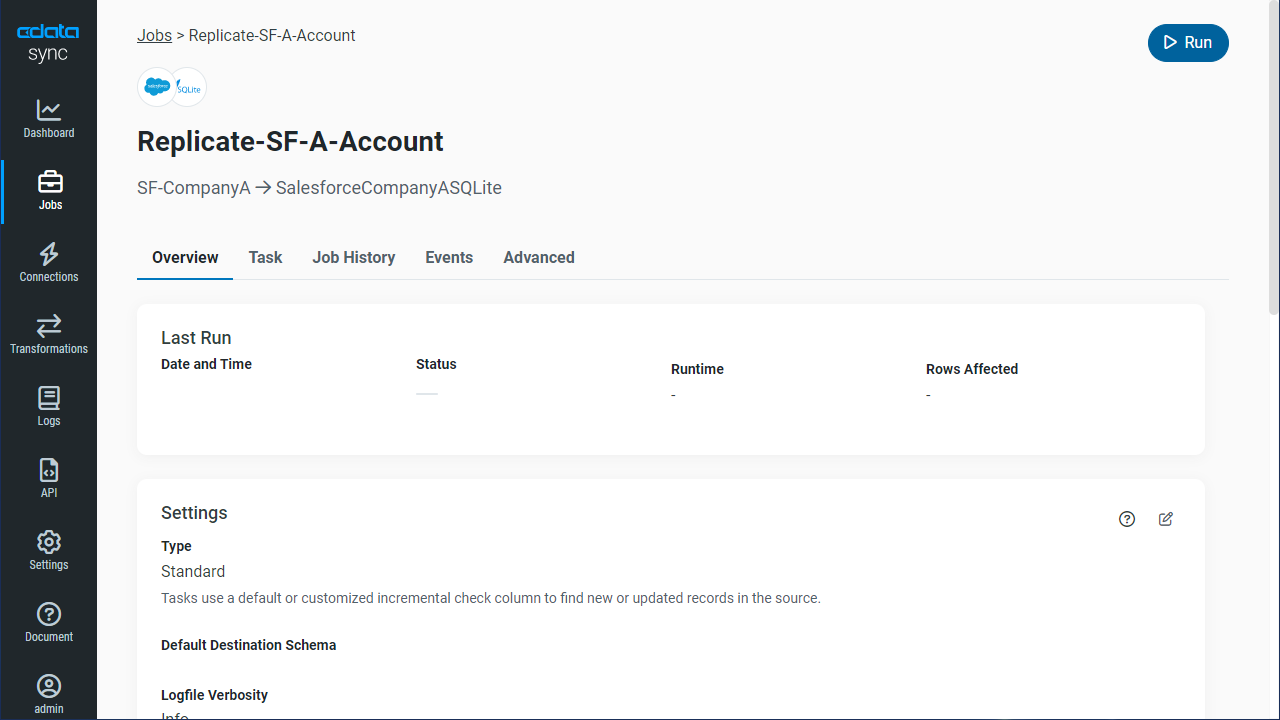
Replicate Entire Tables
To replicate an entire table, click Add Tables in the Tables section, choose the table(s) you wish to replicate, and click Add Selected Tables.
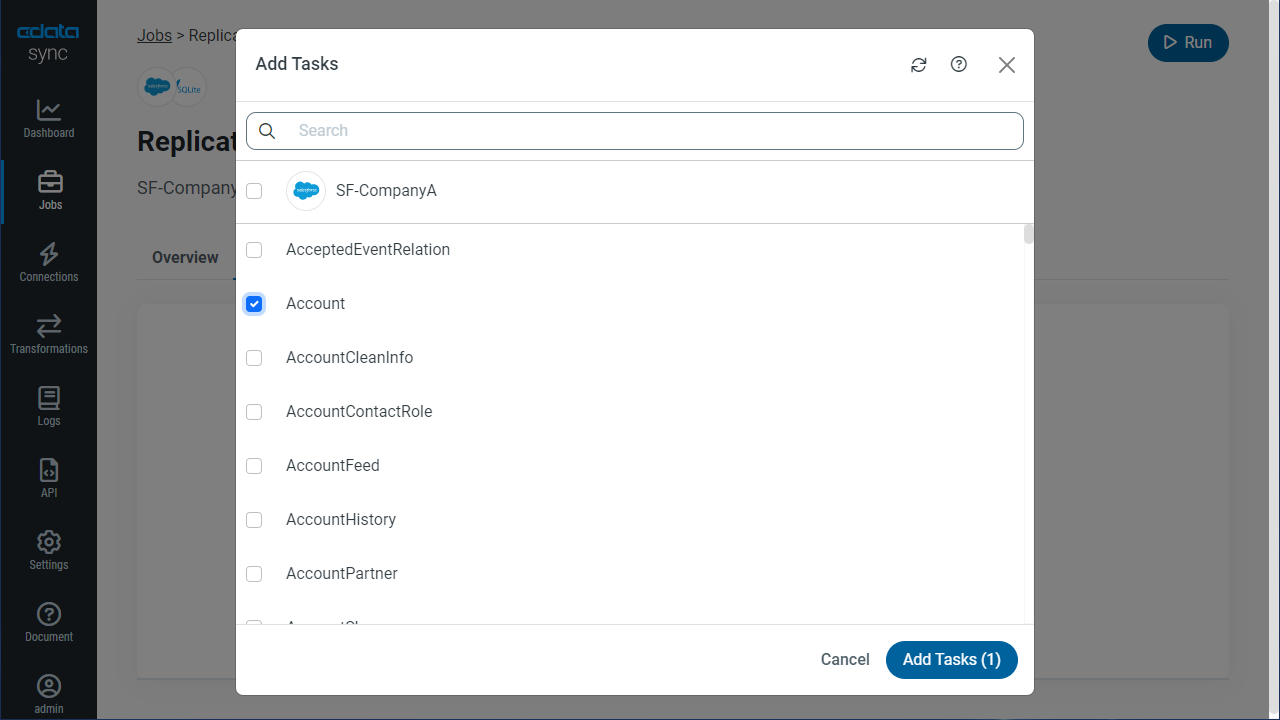
Customize Your Replication
You can use a SQL query to customize your replication. The REPLICATE statement is a high-level command that caches and maintains a table in your database. You can define any SELECT query supported by the Sage US API. To customize your replication, click Add Custom Query in the Tables section and define the Query Statement.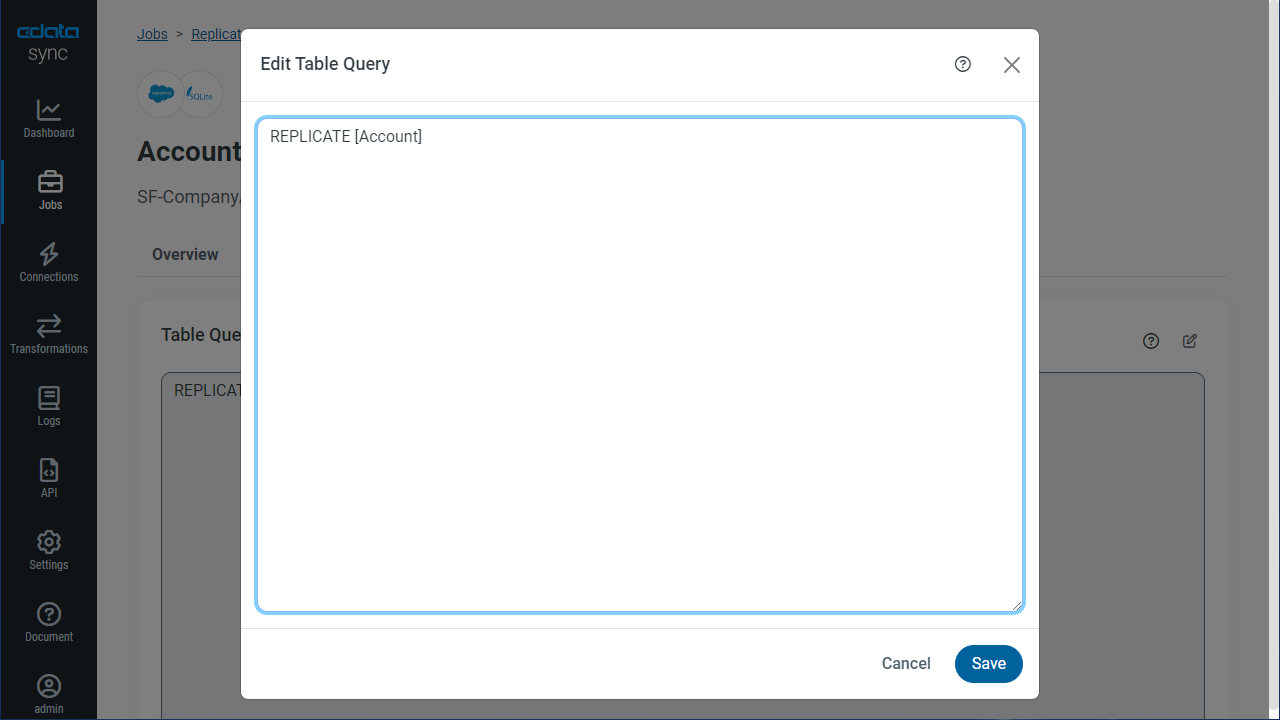
The statement below caches and incrementally updates a table of Sage US data:
REPLICATE Customer;
You can specify a file containing the replication queries you want to use to update a particular database. Separate replication statements with semicolons. The following options are useful if you are replicating multiple Sage US accounts into the same database:
-
Use a different table prefix in the REPLICATE SELECT statement:
REPLICATE PROD_Customer SELECT * FROM Customer; -
Alternatively, use a different schema:
REPLICATE PROD.Customer SELECT * FROM Customer;
Schedule Your Replication
In the Schedule section, you can schedule a job to run automatically, configuring the job to run after specified intervals ranging from once every 10 minutes to once every month.
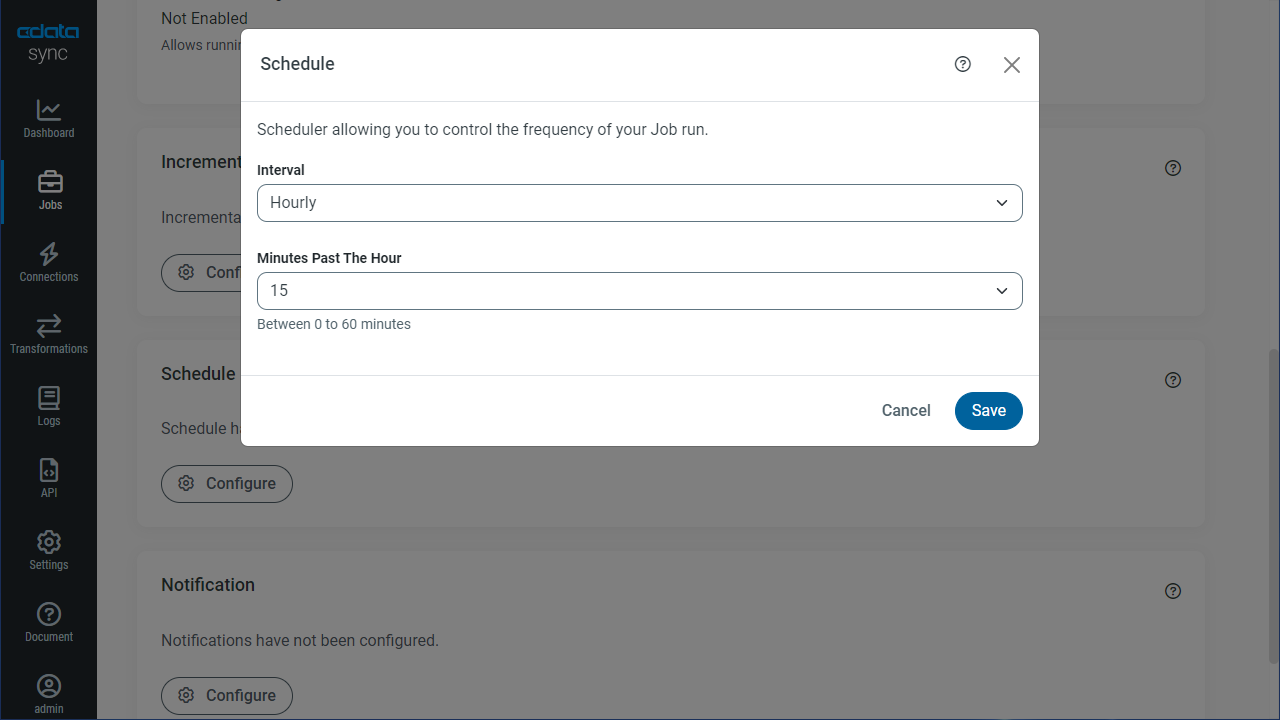
Once you have configured the replication job, click Save Changes. You can configure any number of jobs to manage the replication of the data from your different Sage US accounts.






